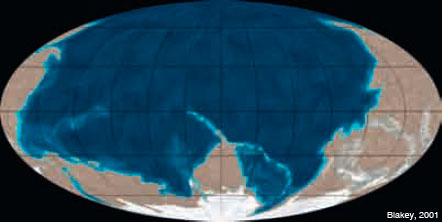The geological features of the Iberian Peninsula are a result of the superimposition of three great orogenic cycles: the Cadomian, which was developed from 750 Ma until 480 Ma ago, the Hercynian cycle (or Variscan), which was started 480 Ma and finished around 250 Ma ago, and finally, the Alpine cycle which started around 250 Ma ago and continues at the present time. These cycles are related to the formation and the subsequent fragmentation of the two large supercontinents: Gondwana and Pangea. To form them it was necessary for continental fragments, that had been initially separated, to converge, collide and weld, forming mountain ranges with important reliefs, and also the subsequent fragmentation and the continental drift. So, we are talking about cyclic processes of the Earth’s evolution.
The information on the geological history of the portion of the Iberian Plate, which at the present time occupies Catalonia, goes back at least 550 Ma. Practically no traces are left of the Cadomian cycle; it is known that between 650 Ma and 600 Ma ago a supercontinent called Gondwana was formed (figure 2).
In fact, the oldest rocks dated up to now in the Pyrenees are volcanic and plutonic rocks from the last stages of this cycle (580 and 560 Ma). Even so, very probably earlier sedimentary rocks exist, the ages of which are unknown.

 Contact
Contact







